Choosing the right kind of fiber is very important in maximizing network performance in fiber optic technology. Among different types, OM3 and OM4 are most frequently used for transmitting high-speed, large-capacity data. This paper aims to shed light on what sets OM3 apart from OM4 fibers while considering their technical characteristics, performance measures, and real-life applications. Such knowledge will enable network engineers and IT specialists to choose wisely between them so that all necessary needs are met with efficiency ensured and reliability maintained throughout their optical fiber networks.
What is OM3 Fiber?
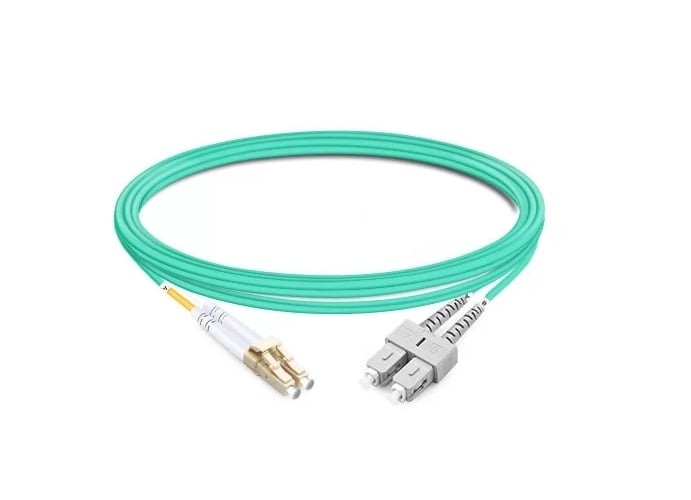
Characteristics of OM3 Fiber
Laser-optimized multimode fiber (LOMMF) is also known as OM3 fiber, and it was specially designed for short-to-medium distance high-speed data transmission. It follows the ISO/IEC 11801 standard and has an aqua jacket. It features a core size of 50 micrometers and is optimized for use with Vertical-Cavity Surface-Emitting Lasers (VCSELs) at 850 nm wavelength. This type of fiber supports 10 Gigabit Ethernet up to 300 meters or 40/100 Gigabit Ethernet up to 100 meters, making it suitable for various applications, including data centers, local area networks (LANs), and high-speed interconnections between network elements in carrier environments. The modal bandwidth of this fiber is specified as 2000 MHz*km which enables it to support higher data rates over longer links while minimizing signal degradation.
Bandwidth Capabilities of OM3
At 850 nm, the effective modal bandwidth (EMB) of OM3 fiber is 2000MHz * km. This large EMB is necessary to keep signal quality within specs for short and medium-range links where fast transmission of huge amounts of information happens. With such wideband capabilities, it can support various standards like 10G Ethernet up to 300 meters, 40G Ethernet, or even 100G Ethernet over distances as long as a hundred meters which covers all requirements placed on modern networks designed for high speeds.
Use Cases for OM3 Fiber
OM3 fiber is widely used in environments that require short distances for the transmission of large amounts of data. This kind of fiber optic cable is ideal for data centers and other enterprise network settings that need 10 Gigabit, 40 Gigabit, or 100 Gigabit Ethernet connections. It can support high data rates over lengths of up to 300 meters for 10 Gigabit Ethernet or up to 100 meters for 40/100 Gigabit Ethernet, making it perfect for inter-rack and intra-rack connections within a data center. This type of wire also finds frequent application in Storage Area Networks where rapidity with low latency is vital. In addition to being compatible with VCSEL technology, OM3 fiber works as an affordable backbone solution across local area networks (LANs) and campus networks.
What is OM4 Fiber?
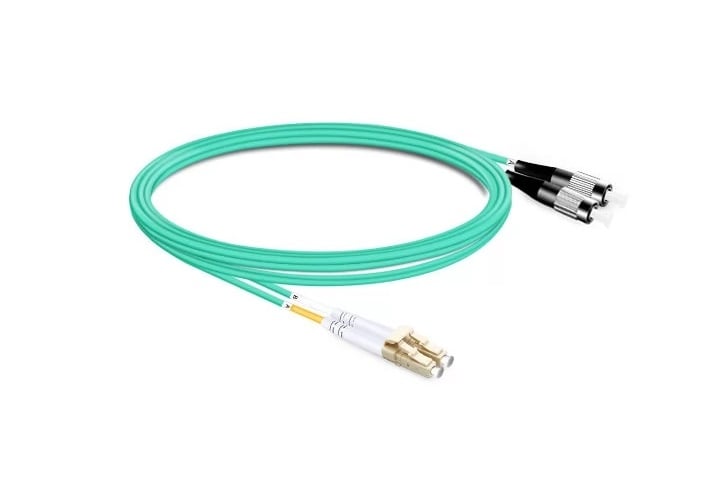
Characteristics of OM4 Fiber
OM4 fiber is a better version of OM3 fiber, which has better characteristics so that it can be used in applications that require higher performance and longer distances. This is because it has an effective modal bandwidth of 4700 MHz * km at 850 nm wavelength for improved signal integrity over long distances. With this enhancement, OM4 fiber supports 10 Gigabit Ethernet connections up to 550 meters and 40/100 Gigabit Ethernet up to 150 meters.
Moreover, OM4 fiber is designed specifically for data centers, high-performance computing networks, and large enterprise environments, with increased data rates and extended transmission lengths. Its abilities make it ideal for use in fast networks that connect different buildings within a campus. Also, it allows for smooth upgrading of existing network infrastructures since it is fully compatible with OM3 optical components.
Improved Bandwidth of OM4
The better bandwidth of OM4 fiber improves its performance. Multimode fibers were surpassed by OM4 fiber at 850 nm wavelength, which has an EMB (effective modal bandwidth) of 4700 MHz*km; this is because it offers better signal integrity as well as lower mode dispersion. With such a great EMB, this multimode can support 10 Gigabit Ethernet up to 550 meters away, unlike the OM3, which only reaches about half that distance. In addition to these features, it also supports 40/100 GbE over distances of 150m so it is perfect for use in today’s data centers or other large enterprise networks where high speeds over long distances are needed. Higher rates are not the only thing ensured by increased bandwidth on an OM4 optical fiber but also allow for smooth migration between different network architectures due to growing demands for data transfer capacity.
Use Cases for OM4 Fiber
Many performance-driven settings rely on OM4 fiber optic cables. Especially within data centers and business networks, its higher bandwidth and longer range are perfect for 10, 40, and 100 Gigabit Ethernet applications. High-speed data transmission between servers, storage systems, and network infrastructure of data centers is done using OM4 fiber optic cables to ensure the efficiency of operation as well as scalability. Medical imaging and transaction processing departments in financial institutions or healthcare facilities require this type of cable since it supports fast transfers coupled with low latency rates. Moreover, large campus networks in enterprises use these same cables to connect different buildings, thus creating strong network backbones that can handle increased traffic volumes that accompany future growth. In fact, organizations seeking to improve their current network infrastructures can smoothly switch from OM3 cables to OM4 because they are compatible with each other while still offering a cost-effective upgrade path.
What are the Key Differences Between OM3 and OM4?
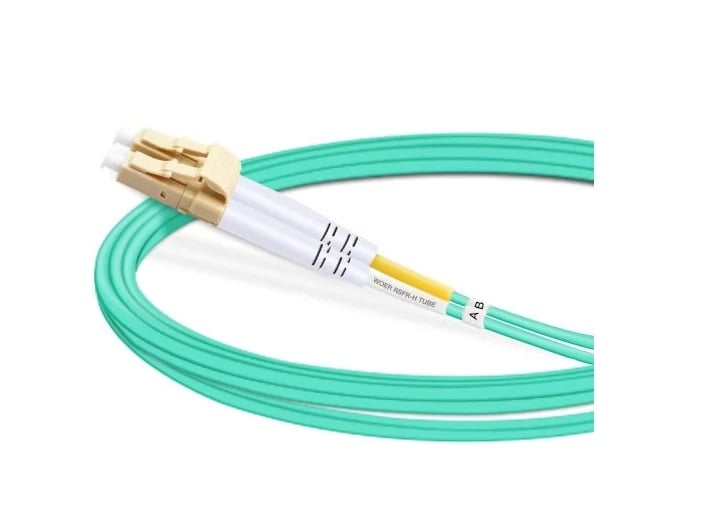
Core Size Comparison
When it comes to comparing OM3 and OM4 fibers, one needs to consider their core sizes and related performance parameters. Both of them have 50-micron core diameters that ensure effective transmission of high-speed data. Nevertheless, they differ in modal bandwidth where usually an OM3 fiber has a modal bandwidth of 2000 MHzkm at 850 nm while the same value for OM4 is rated at 4700 MHzkm for the same wavelength. This increased modal bandwidth in OM4 fiber supports higher data rates over longer distances than OM3, which can only be used for advanced networking applications with more future-proofing requirements because it is designed to work well even when speeds increase beyond what we currently know about them according to most recent research findings into this area.
Bandwidth Comparison
When it comes to bandwidth, OM3 and OM4 fibers are quite different in terms of data transmission capacity and application suitability. At 850 nm, OM3 fiber supports 10 Gb/s for a distance of up to 300 meters or 100 Gb/s for a distance of up to 100 meters with a modal bandwidth of 2000 MHzkm. On the contrary, at the same wavelength, OM4 fiber can support higher data rates over longer distances owing to its increased modal bandwidth equal to 4700 MHzkm. Specifically, it allows for transmitting at speeds up to 10 Gb/s within 550 meters or up to 100 Gb/s within 150 meters. With this wider band as well as extended range capabilities; therefore, this type is more suitable than any other fiber optic cables currently used in today’s high-speed networks where there are large quantities of information being sent back and forth between devices over relatively long distances, such as those required by modern high-speed data centers and network infrastructures demanding higher data rates along with longer transmission distances.
Transmission Distance Differences
It is vital to assess the highest reach each type of fiber can achieve at their respective rates when comparing differences in transmission distance. For instance, OM3 fiber supports data transmission of 10 Gb/s up to 300 meters while it works for 40 Gb/s and 100 Gb/s rates within a range of 100 meters. On the other hand, OM4 fiber goes beyond these limits significantly; this means that it can be used for data transfer over larger areas or over long distances, which need high-speed connectivity between expanded data centers as well as enterprise networks where such kind of capacities are required. In addition, OM4 also allows for longer cable runs between racks, which reduces latency and improves network performance, especially in large-scale deployments.
OM4’s extended coverage area saves money on infrastructure while still boosting performance, making it an essential part of any future-proofed networking solution.
How Do OM3 and OM4 Compare in Terms of Cost?
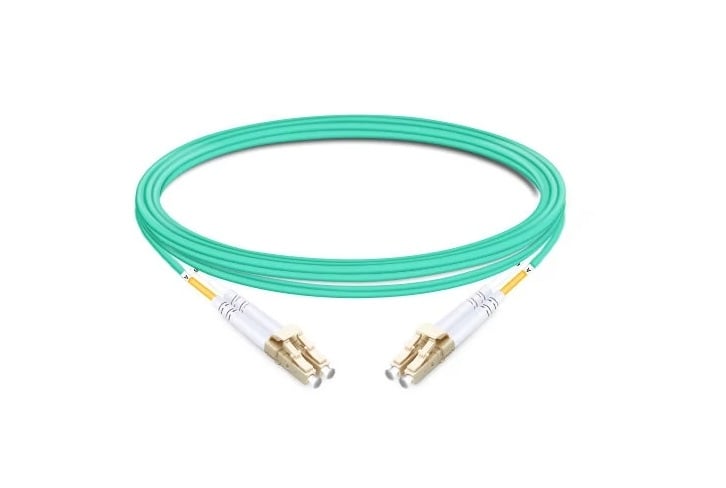
Cost of OM3 Fiber
Even though OM4 fiber is more expensive than OM3, the total cost must be evaluated with respect to specific network needs and lasting advantages. For example, the price of an average meter of OM3 fiber ranges from $0.25 to $1, depending on the seller and amount purchased. Thus, its cheapness makes it ideal for projects working within tight budgets or applications with limited distances that do not require the extended reach provided by OM4. Nevertheless, it should be remembered that higher initial investments in OM4 fibers could save more money in the future due to better performance as well as reduced need for extra infrastructure prompted by growing data transmission demands.
Cost of OM4 Fiber
OM4 fiber is usually more expensive than OM3, but this is because it has more capabilities and can reach further distances. You can expect to pay between $1 and $2 per meter for OM4 fiber, depending on where you buy it from and how much of it you need. While this does mean that there is a higher up-front cost involved with using this type of cable, these better speeds are often worth every penny in addition to being able to scale. This is especially true if you have an application that requires high-speed data transmission over long distances – then there really isn’t any other choice! Future-proofing your network and making sure it stays robust are both important things to consider when planning for growth or change within an organization, so sometimes going with something like OM4 instead could actually end up saving money down the line by eliminating frequent upgrades or additional infrastructure as necessary.
Cost-Effectiveness
To evaluate cost-effectiveness, it is important to take into account immediate and long-term effects. They indicate that OM3 fiber has a lower initial cost of about $0.25-1 per meter, but its use is more suitable for shorter distances and lighter data transmission requirements than any other. Conversely, priced at around $1-2 per meter, OM4 fiber offers higher performance levels, scalability options, and longer distances covered, thus making it a future-proof solution compared to all others. Even though this means spending more money upfront, increased transmission speeds together with a reduced need for extra infrastructure can save significant amounts in the end with regard to OM4 fiber, especially where there are growing demands for data transfer rates. In this case, therefore, if you want your project or network to last long while still offering maximum value for investment, then choose OM4 fiber optic cables over everything else available.
How to Choose Between OM3 and OM4 Fiber?
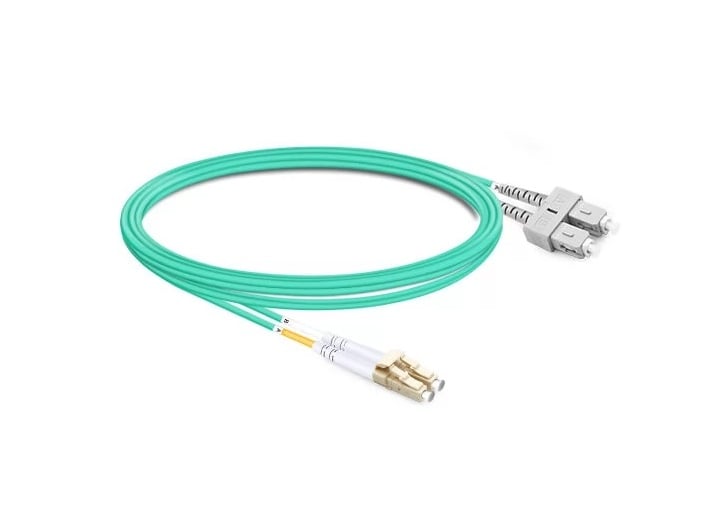
Application Needs Analysis
In analyzing the specific requirements of your application, it is crucial to choose between OM3 and OM4 Fiber.
- Distance and Bandwidth Requirements: This type is for short-distance applications that do not exceed 100 meters when transmitting data at 10GBPS. It is best suited for small-to-medium-sized data centers. In contrast, this type supports distances of up to 150 meters at 10Gbps, which makes it ideal for larger data centers or more complex network infrastructures requiring higher bandwidths.
- Scalability and Future-Proofing: If a project plans for future upgrades in bandwidth or expects increasing data transmission rates then this kind should be used because it has better performance capabilities over longer distances. This will save you from having to overhaul your infrastructure frequently.
- Initial cost vs Long term investment: Although being cheaper initially than the other option, OM3 fibre might turn out expensive in the end as it may fail to meet increased demands over time thus necessitating frequent upgrades. On the contrary, OM4 Fibre proves high ROI through sustained performances and less need for subsequent updates even though it costs more at first.
Consideration of these points will enable you identify which fiber optic cable suits your immediate operational needs as well as strategic objectives in the long run.
Futureproofing Considerations
To plan for the future means constructing a fiber optic network with a concern for longevity and adaptability to changing technology.
- Wide Band Capabilities: OM4 fiber has been designed to support higher data rates for future bandwidth-demanding applications and new technologies like 40Gbps and 100Gbps Ethernet.
- Longer Distance Reach: With this extended reach, not only can bigger infrastructural demands be met but also more flexible and scalable network topologies can be deployed.
- Cost-Benefit Analysis: Although the initial investment required for OM4 fibers is greater than that needed by OM3, OM4 fibers are cost-effective in the long run due to their improved performance and scalability, which reduce the frequent need for upgrading.
- Compatibility with Emerging Technologies: Higher specification levels of OM4 fibers ensure that they can work together with any other networking devices or protocols in the future, which may demand improved performance standards.
By taking into account these points, establishments will be able to make their network infrastructure proof against obsolescence thereby ensuring strong performance over many years.
Environment and Distance Requirements
It is very important that when we think of the environment and distance of fiber optic networks, we must consider evaluating the specific operational conditions and the distances involved.
- Environment Conditions: Certain fibers are superior to certain environmental conditions. For instance, outdoor-rated fiber cables usually have an added covering that protects them from extreme temperatures, moisture, and physical damage.
- Distance Capabilities: Another major point is the maximum length a cable can reach without losing its signal quality. Single-mode fibers can transmit data up to 10km with low loss, so they are best suited for long-haul transmissions. Multimode fibers like OM3 or OM4 are good for shorter distances where space is limited, as they offer greater bandwidths over reduced distances, such as 550 meters at a 10000Mbps Ethernet signaling rate.
- Interference Susceptibility: Another thing that should not be ignored during this evaluation is interference susceptibility caused by different sources, such as Electromagnetic Interferences (EMIs), among others likely to be found within an operating environment. This makes fiber optics more resistant against EMI, making them ideal for areas with lots of electronic noise pollution, i.e., industrial settings or vicinity around heavy machinery.
- Network Layout And Design: Network designs may also influence selection criteria based on intended purpose(s). Within premises having many floors like those found in campus networks or data centers where there is a need for extensive cabling over short spaces, high bandwidth capability is required; thus, optical multimode fiber cables like OM4 can be used effectively under such circumstances.
In addition to these factors, it would also be wise to consider logistical requirements along with other operational necessities so as to come up with appropriate optic solutions that meet specific environmental needs coupled with desired performance levels.
Reference sources
Frequently Asked Questions (FAQs)
Q: What’s the difference between OM3 and OM4 multimode fiber?
A: The modal bandwidth is the main difference between OM3 and OM4 multimode fibers. Modal bandwidth refers to how far a fiber can transmit data before it starts to lose its signal. In comparison, OM4 fiber optic cables are able to support higher speeds over longer distances than OM3 ones. For example, while an OM3 might be able to carry 10 Gbps over 300 meters, an equivalent length of OM4 could handle 10 Gbps up to 550 meters away.
Q: How does multimode fiber compare?
A: They have a lower modal bandwidth than either OM3 or OM4 so they can’t support as high a speed or distance before the signal degrades. Typically used for runs of up to 200 meters at 1 Gbps, whereas with an equivalent length of Multimode Fiber you could get up to either twice that much distance (OM2 being good for about 300m) or three times more speed (OM3 & OM4 supporting up to either 10Gb/s or 40Gb/s respectively).
Q: Which cable type should I choose for my data center?
A: If your building has less than ten floors and no more than four racks on each floor, then Single Mode Fiber should be fine; otherwise, go with Multi-Mode Fiber – specifically either ‘OM3’, which supports up-to-10 Gigabit Ethernet at distances of around 300 meters per second-floor height OR else ‘OM4’ which can do upto either forty Gigabit Ethernet at around twelve times this distance (i.e., up-to-1200m) OR else one hundred Gigabit Ethernet at just under half that same length i.e., down-and-back again within a single floor height.
Q: Is there such a thing as “OM5” fiber?
A: Yes there is such thing as “OM5” fiber. It is the latest type of multimode fiber and supports Shortwave Wavelength Division Multiplexing (SWDM). This means that it can carry multiple wavelengths on a single fiber, which effectively increases the bandwidth without requiring more fibers. Because of this backward compatibility with OM3 and OM4, it’s been hailed as being quite versatile for future-proofing networks.
Q: How does the core size differ in different types of Multimode Fiber?
A: The core size used in an OM1 is 62.5 micrometers, whereas OM2, OM3, OM4, and even newfangled stuff like “OM5” all have a much smaller core size of just 50μm – which allows them to handle higher bandwidths over longer distances.
Q: Can single-mode applications use OM3 fiber optic cables?
A: No, the OM3 fiber optic cable is made for multimode applications specifically. Single-mode fiber is a different kind of cable with a smaller core that can support longer distances and higher data rates without modal dispersion. In order to achieve the advantages of single-mode applications, one should use single-mode fiber cables.
Q: What color coding is used for different multimode fibers?
A: The color coding for multimode fibers is as follows: usually orange for OM1 cable; either orange or grey for OM2 cable; typically aqua for both OM3 and OM4 cables; lime green in case of OM5. These colors help us to easily identify what type of fiber we are dealing with and know its characteristics at a glance.
Q: Where are the best places to use OM3 and OM4 multimode fibers?
A: When it comes to high-speed data transfer applications within data centers, LANs (local area networks), storage area networks (SANs), etc., nothing beats using an optimized-for-laser-lighting-fiber such as an om3 or om4 multimode one. With its ability to handle 10Gbps speed over 300meters or even up to 100 meters if we talk about 40Gbps in the case of om3 while still being able to go up further distances like 550 meters at 10Gbps & 150 meters on top end (100GbE) link lengthwise there really isn’t much that can compete against these bad boys!
Q: What modes does light have in multi-mode fiber?
A: Light has multiple modes when traveling through multi-mode fibers, but this leads to problems because each mode takes a different amount of time to get from one end of the cable to the other due to them having variable speeds, which creates something called modal dispersion where signals get spread out in time causing bandwidth limitation along with distance reduction for effective data transmission. To solve this, laser-optimized OM3 and OM4 multimode fibers were developed, which allow higher data rates over longer distances by minimizing modal dispersion through them.
Q: Why should I use multimode fiber instead of single-mode?
A: A reason why one might choose multimode over single mode would be its cheaper price tag due to connectors & transceivers being less costly compared with their counterparts used in single-mode applications. It also offers good enough performance for most short to medium-range networks like those found within enterprise or data center environments where cost is a factor but still requires decent performance levels; however, it doesn’t have the same range as single-mode cable that can support higher rates at greater lengths usually needed for long haul/Telecomms type work.
Related Products:
-
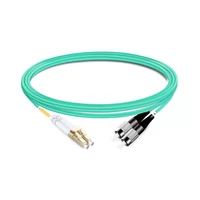 1m (3ft) Duplex OM3 Multimode LC UPC to FC UPC PVC (OFNR) Fiber Optic Cable
$2.80
1m (3ft) Duplex OM3 Multimode LC UPC to FC UPC PVC (OFNR) Fiber Optic Cable
$2.80
-
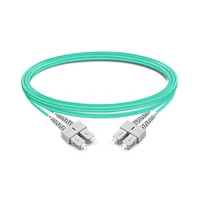 1m (3ft) Duplex OM3 Multimode SC UPC to SC UPC OFNP Fiber Optic Cable
$3.00
1m (3ft) Duplex OM3 Multimode SC UPC to SC UPC OFNP Fiber Optic Cable
$3.00
-
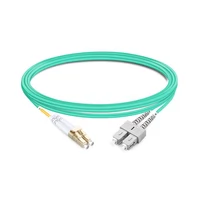 1m (3ft) Duplex OM3 Multimode LC UPC to SC UPC OFNP Fiber Optic Cable
$3.00
1m (3ft) Duplex OM3 Multimode LC UPC to SC UPC OFNP Fiber Optic Cable
$3.00
-
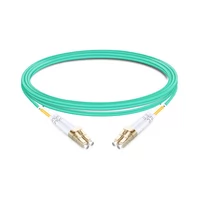 1m (3ft) Duplex OM3 Multimode LC UPC to LC UPC OFNP Fiber Optic Cable
$3.00
1m (3ft) Duplex OM3 Multimode LC UPC to LC UPC OFNP Fiber Optic Cable
$3.00
-
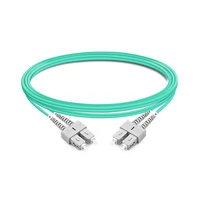 1m (3ft) Duplex OM3 Multimode SC UPC to SC UPC LSZH Fiber Optic Cable
$3.00
1m (3ft) Duplex OM3 Multimode SC UPC to SC UPC LSZH Fiber Optic Cable
$3.00
-
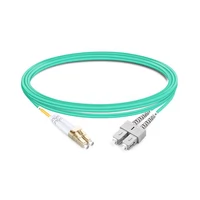 1m (3ft) Duplex OM3 Multimode LC UPC to SC UPC LSZH Fiber Optic Cable
$3.00
1m (3ft) Duplex OM3 Multimode LC UPC to SC UPC LSZH Fiber Optic Cable
$3.00
-
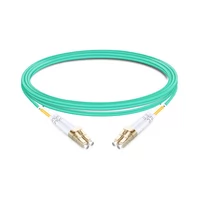 1m (3ft) Duplex OM3 Multimode LC UPC to LC UPC LSZH Fiber Optic Cable
$3.00
1m (3ft) Duplex OM3 Multimode LC UPC to LC UPC LSZH Fiber Optic Cable
$3.00
-
 1m (3ft) Duplex OM3 Multimode SC UPC to SC UPC PVC (OFNR) Fiber Optic Cable
$3.00
1m (3ft) Duplex OM3 Multimode SC UPC to SC UPC PVC (OFNR) Fiber Optic Cable
$3.00
-
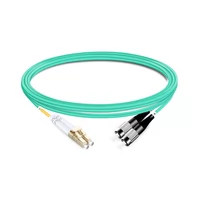 1m (3ft) Duplex OM4 Multimode LC UPC to FC UPC PVC (OFNR) Fiber Optic Cable
$2.90
1m (3ft) Duplex OM4 Multimode LC UPC to FC UPC PVC (OFNR) Fiber Optic Cable
$2.90
-
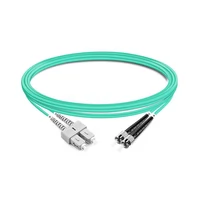 1m (3ft) Duplex OM4 Multimode SC UPC to ST UPC PVC (OFNR) Fiber Optic Cable
$3.00
1m (3ft) Duplex OM4 Multimode SC UPC to ST UPC PVC (OFNR) Fiber Optic Cable
$3.00
-
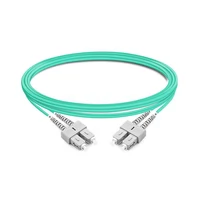 1m (3ft) Duplex OM4 Multimode SC UPC to SC UPC PVC (OFNR) Fiber Optic Cable
$3.00
1m (3ft) Duplex OM4 Multimode SC UPC to SC UPC PVC (OFNR) Fiber Optic Cable
$3.00
-
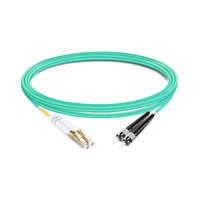 1m (3ft) Duplex OM4 Multimode LC UPC to ST UPC PVC (OFNR) Fiber Optic Cable
$3.00
1m (3ft) Duplex OM4 Multimode LC UPC to ST UPC PVC (OFNR) Fiber Optic Cable
$3.00
-
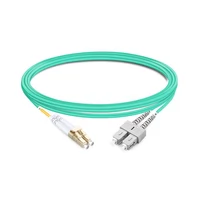 1m (3ft) Duplex OM4 Multimode LC UPC to SC UPC PVC (OFNR) Fiber Optic Cable
$3.00
1m (3ft) Duplex OM4 Multimode LC UPC to SC UPC PVC (OFNR) Fiber Optic Cable
$3.00
-
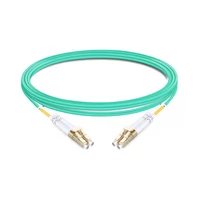 1m (3ft) Duplex OM4 Multimode LC UPC to LC UPC PVC (OFNR) Fiber Optic Cable
$3.00
1m (3ft) Duplex OM4 Multimode LC UPC to LC UPC PVC (OFNR) Fiber Optic Cable
$3.00
